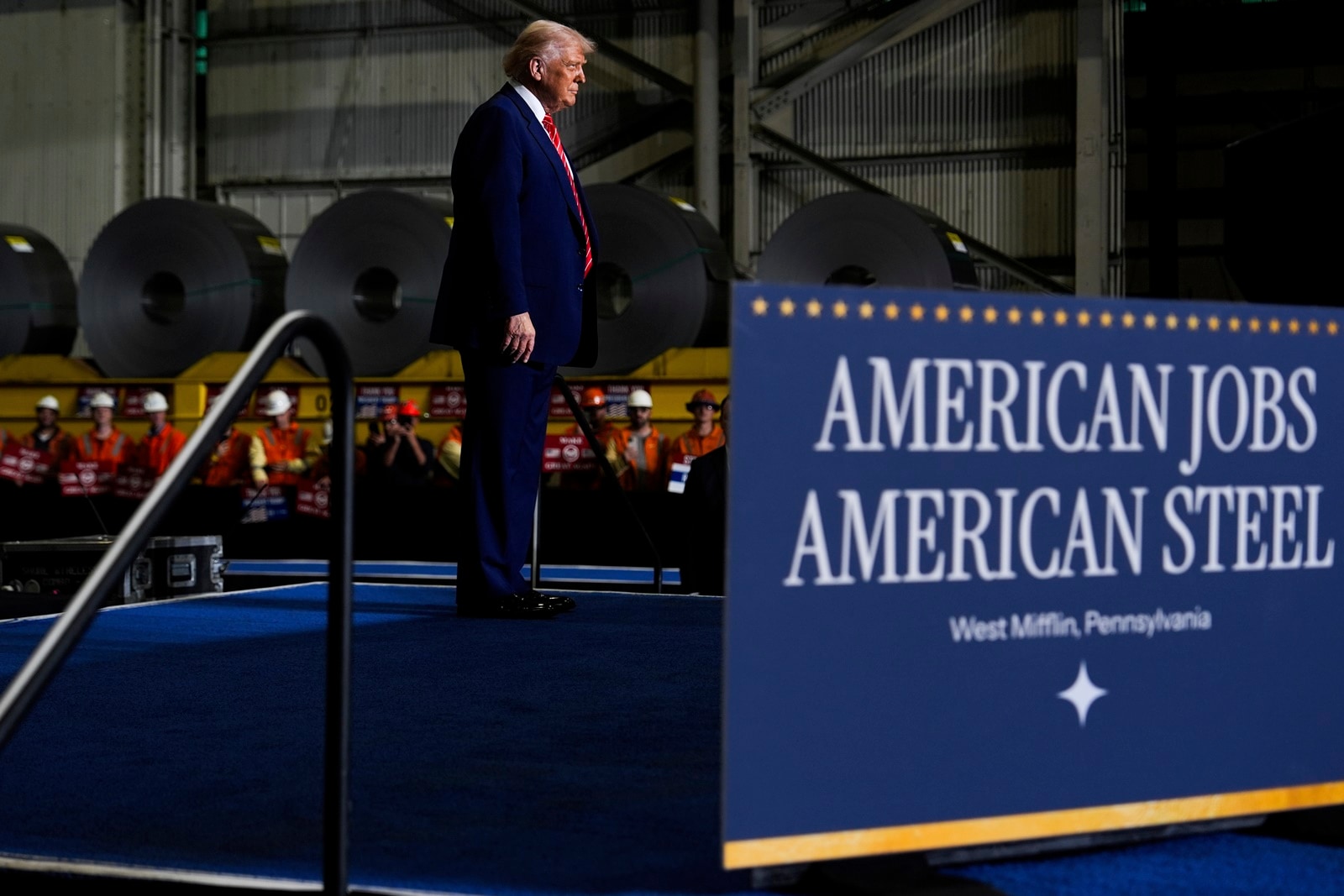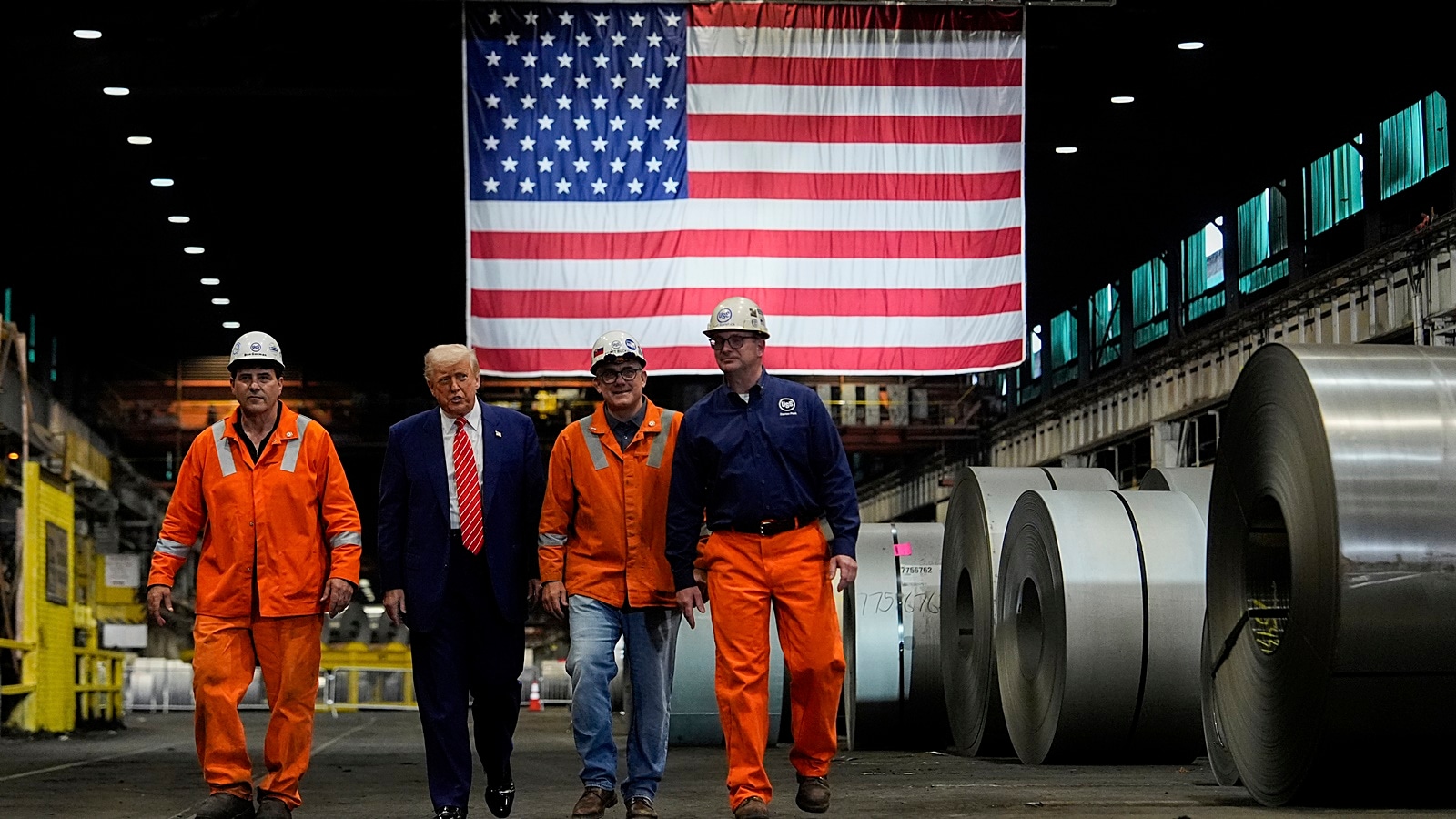US steel tariffs update: US PRESIDENT Donald Trump Friday announced he would double import tariffs on steel to 50 per cent, a move that was termed “unfortunate” by India’s exporters, who said this made trade talks “much more difficult and complicated”.
Addressing a rally at a US steel plant in West Mifflin, Pennsylvania, Trump said Friday, the sharp hike in tariffs on steel from 25 per cent to 50 per cent will “even further secure the steel industry in the United States”. “Nobody’s going to get around that,” he said.
Later in a social media post, Trump said, “It is my great honour to raise the tariffs on steel and aluminium from 25% to 50%, effective Wednesday, June 4th. Our steel and aluminium industries are coming back like never before. This will be yet another BIG jolt of great news for our wonderful steel and aluminium workers. Make America Great Again.”
This fresh tariff hike follows a similar increase earlier this year, when Trump raised tariffs on aluminium and steel to 25 per cent. Exporters had told the Union Ministry of Commerce and Industry that exports worth $5 billion were affected.
 US President Donald Trump arrives to speak at US Steel Corporation’s Mon Valley Works-Irvin plant on Friday. (Photo: AP)
US President Donald Trump arrives to speak at US Steel Corporation’s Mon Valley Works-Irvin plant on Friday. (Photo: AP)
“It’s unfortunate that, while bilateral trade agreement (BTA) negotiations are ongoing, such unilateral tariff hikes are being introduced. It only makes the work of negotiators much more difficult and complicated. This will definitely impact engineering exports, which currently stand at around $5 billion under this category,” said Pankaj Chadha, Chairman, Engineering Export Promotion Council (EEPC) India.
“We urge that, since the UK has been granted exemption from Section 232, India should also be extended a similar exemption, possibly under tariff rate quota (TRQ) restrictions.”
Federation of Indian Exporters’ Organisation President S C Ralhan said the proposed tariff hike will have a significant bearing on steel exports, especially in semi-finished and finished categories like stainless steel pipes, structural steel components, and automotive steel parts. “These products are part of India’s growing engineering exports, and higher duties could erode our price competitiveness in the American market,” he said.
Story continues below this ad
The tariff hike has been implemented under Section 232 of the US Trade Expansion Act of 1962, a law that allows the President to impose tariffs or other trade restrictions if imports are deemed a threat to national security. Trump first invoked this provision in 2018 to impose a 25 per cent tariff on steel and 10 per cent on aluminium.
US tariffs on steel and aluminium tend to trigger ripple effects globally. During Trump’s first term, the European Union imposed restrictions on Indian exporters in response to similar US measures.
Ajay Srivastava, head of think tank GTRI, said, “The economic impact of these higher tariffs will be significant. US steel prices are already high, at around $984 per metric tonne — far above European prices at $690 and Chinese prices at $392.”
He said this is expected to push prices in the US to around $1,180 per metric tonne, squeezing domestic industries such as automotive, construction, and manufacturing that depend heavily on steel and aluminium as key inputs. “Sectors may face hundreds of dollars in additional material costs per tonne, driving up prices, reducing competitiveness, and risking job losses or inflationary pressures,” he said.
Story continues below this ad
“For India, the consequences are direct. In FY2025, India exported $4.56 billion worth of iron, steel, and aluminium products to the US, including $587.5 million in iron and steel, $3.1 billion in articles of iron or steel, and $860 million in aluminium and related articles. These exports are now exposed to sharply higher US tariffs, threatening the profitability of Indian producers and exporters,” GTRI said in a note following Trump’s announcement.
India has already issued a formal notice at the World Trade Organization (WTO) signalling its intention to impose retaliatory tariffs on US goods in response to the earlier steel tariffs. With Trump now doubling the duties, it remains to be seen whether India will proceed with retaliation, potentially by increasing tariffs on select US exports within a month.


